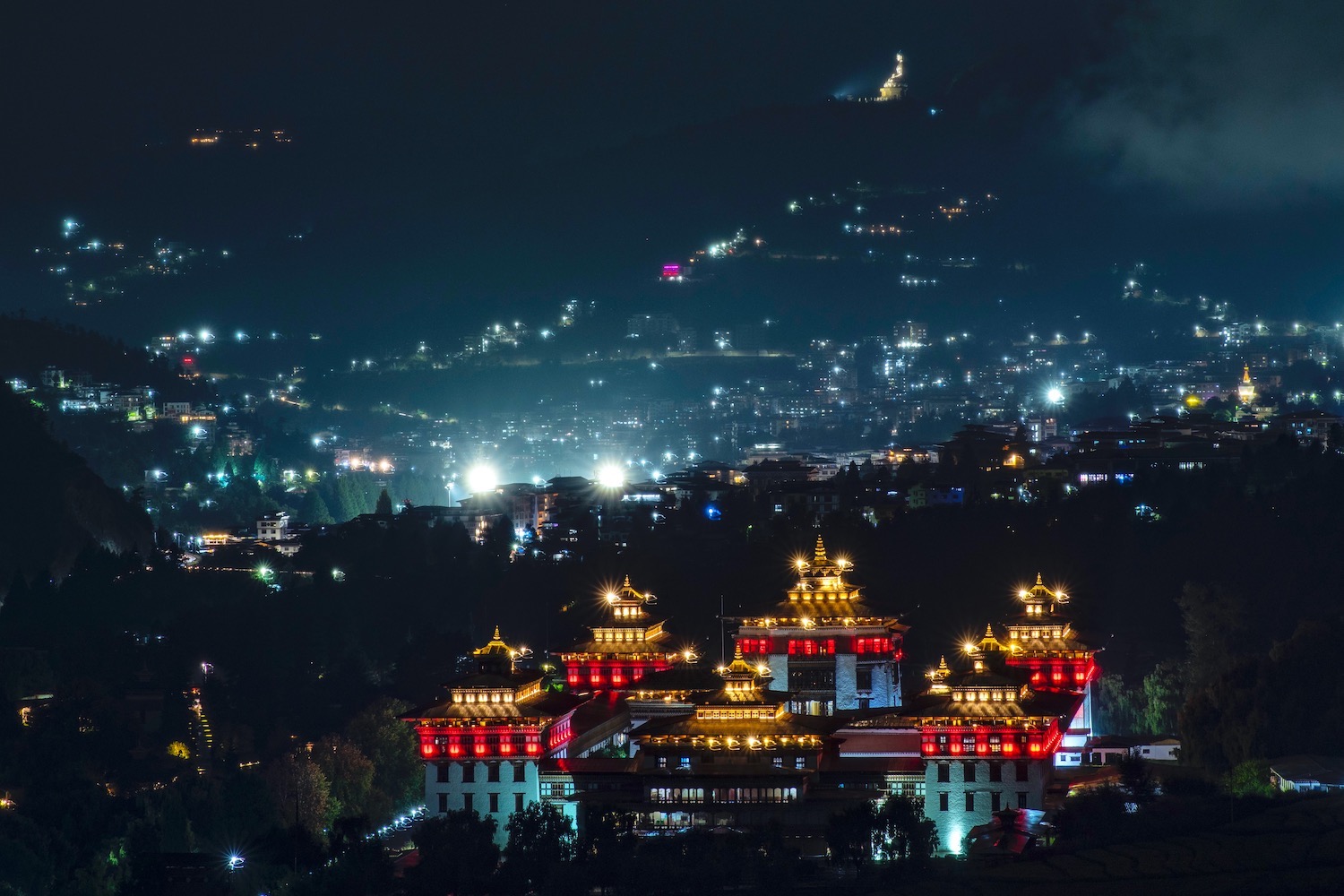As you’ll know if you read my essay on the Kingdom, Bhutan wasn’t a place I loved immediately. By the time I left, however, I was deeply sad to say goodbye. And I was dreaming of a return trip, down to the details.
Tibet, however, was on another level. The scenery was more dramatic; the culture was more defined; there were actually food items I could eat without vomiting. I felt this way from the moment my plane landed until long after another one whisked me back to Chengdu.
This might seem like an anticlimactic note to start on—the topic of this post, after all, is Bhutan vs Tibet—but trust me when I say: You’ll want to keep reading.
Why I Visited Bhutan and Tibet on the Same Trip
Of course, I didn’t have to decide between Bhutan or Tibet. Once I decided in late 2023 that 2024 was going to be the year I finally visited Bhutan, I knew almost immediately that I would also need to visit Tibet. Energetically, this just make sense. It appeared to make sense geographically, too, until I realize that in spite of how “close” the two countries are, traveling between them takes several days.
Specifically, I had to fly from Paro back to Bangkok, then from Bangkok to Chengdu and finally from Chengdu to Lhasa. There are no direct flights from Bhutan to anywhere in China; although I could’ve flown from Paro to Kathmandu, US citizens can’t avail the direct flight from there to Lhasa. But more on logistics in a second—we’ve got more interesting topics to discuss now.





Ways to Compare Bhutan With Tibet
Ease of access
In terms of physical access, Tibet is a lot better connected than Bhutan. While it has limited international flights, there are dozens of daily flights from cities in China. By contrast, only a handful of foreign cities (such as Bangkok, Delhi and Kathmandu) have direct flights to Bhutan. On the other hand, while you can get an e-Visa to Bhutan and go there independently, the only way to access Tibet is after booking an organized tours.
Culture
Traveling from Bhutan to Tibet, I expected things to be relatively similar on a cultural basis. And they were in some sense. People in both places practice Buddhism in a conspicuous way, including wearing traditional clothing and praying in public. But Tibet’s Buddhism is a lot louder than Bhutan’s—literally and figuratively—from the ubiquitous chanting, to props like hand-held prayer wheels and yak butter.
Landscape
While Bhutan is an undeniably beautiful country, Tibet is on another level. Just as Bhutanese culture is less in-your-face and more subtle than Tibetan culture, so too do the towering peaks, vast deserts and colorful lakes of the Tibetan Plateau hook your attention (and your heart) and refuse to release them. In fact, with the exception of Dochula Pass, I often struggled to see the Himalaya at all while in Bhutan.
Architecture
Comparing Tibet vs Bhutan on this level is interesting. While nowhere in Bhutan is as ubiquitous as Potala Palace, the Bhutanese dzong (monasteries) are more uniform (and iconic) in their aesthetic than Tibetan buildings—which are beautiful in their own right, but are also a bit all-over-the-place. On the other hand, Tibet’s cityscapes are more pleasing than Bhutan’s. And larger, at least in the case of Lhasa and Shigatse.
Things to do
While I was in Tibet, some Australian travelers asked me how I would compare the two countries in terms of things to do. “Bhutan is more…peaceful” than Tibet, I said, although what I really meant is that it was more boring. With the exception of the Tiger’s Nest trek, there aren’t a lot tourist attractions in Bhutan at all. In Tibet, by contrast, you have everything from Lhasa’s Potala Palace, to Everest Base Camp, to Namtso Lake.





How to Visit Bhutan and/or Tibet
In the wake of covid-19, in a bid to boost post-pandemic tourism, Bhutan’s government allowed independent travelers to visit the country for the first time ever. To visit Bhutan on your own, you’ll need a Bhutan eVisa (which requires you to decide in advance how many days you’ll stay), as well as flights to Bhutan, which only depart from a few cities, such as Bangkok, Kathmandu and Delhi.
Tibet is both easier and more difficult to visit. It’s easier in that you simply need to get to Chengdu (which is accessible via direct flights from all over the world), and then book a short domestic flight. It’s more difficult since independent travel to Tibet is forbidden; in order to receive your Tibet travel permit (a necessary document to enter Tibet), you must book an organized tour; you also need a China visa.
Other FAQ About Visiting Tibet and Bhutan
Which is better, Bhutan or Tibet?
Bhutan is a peaceful, gently beautiful control that I will never forget, even if I am not able to return in the future. Tibet, by contrast, is home to some of the world’s most dramatic scenery, a culture so potent you can’t ignore it and leaves an impression from the moment you land. One is not “better” than the other, though Tibet certainly speaks in a louder voice.
What is the relationship between Bhutan and Tibet?
Bhutan and Tibet have had official and unofficial relations throughout the centuries, as two powerful Buddhist kingdoms located on either side of the Himalaya. These days, however, contact is limited, without a single flight between them and virtually no economic or political ties.
Is Tibet now called Bhutan?
Tibet and Bhutan are not one in the same; Tibet represents a geographically, politically and historically different place than Bhutan, with either being located across the entire Himalaya range from the other. The main difference between modern Tibet and its historical predecessors is that it is now officially under the control of the People’s Republic of China.
The Bottom Line
In some sense, there is no comparison when comparing Bhutan vs Tibet. Bhutan is a lovely place; Tibet is an epic and unforgettable one. The former is a slow-burn destination I hated at first and slowly came to adore; Tibet rocked my world from the moment I rocked up. With this beings said, I do think there is value to visiting both Bhutan and Tibet if you have the time and resources. And not just to compare them for yourself, though if I’m honest, that was one of my primary reasons for taking both trips (and taking them back-to-back). Need personalized help planning your Himalayan adventure? Hire me as your Travel Coach!







